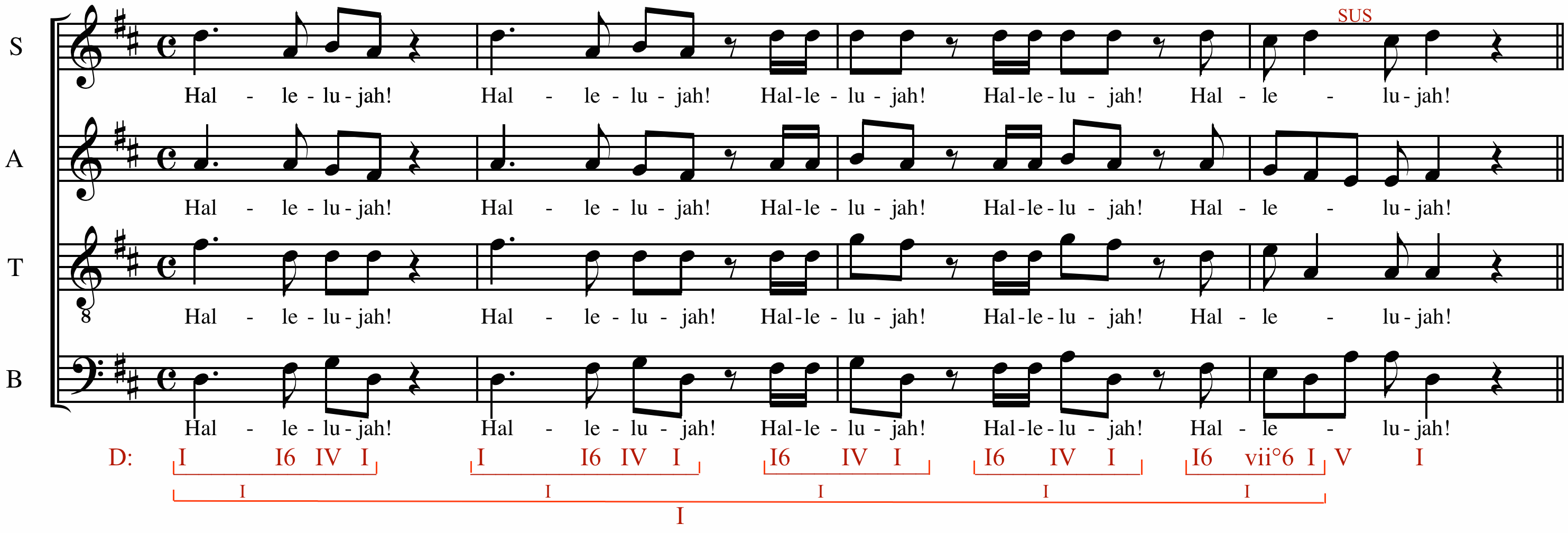
HARMONIC EXPANSIONS
CHAPTER 5: MORE TONIC EXPANSIONS
5.5 Inserting IV
 |
 |
 |
The traditional 12 bar blues progression, as in Elvis Presley's "Hound Dog" (above), uses IV as an expansion of the initial tonic. Listen to the accompaniment on the two singings of the words "Hound Dog." The first singing is accompanied by the initial tonic--it begins the song after a pick-up--and the second singing is accompanied by a IV chord. 12 bar blues usually has three phrases of music with the following harmonic structure (one Roman numeral per measure and disregarding sevenths):*
Phrase 1: I I I I
Phrase 2: IV IV I I (often with the same words as Phrase 1)
Phrase 3: V IV I V (or I)
So in 12 bar blues, the IV chord of Phrase 2 is inserted within an overall tonic harmony which lasts for two full phrases or 8 measures.
Play the following video for a demonstration of IV being used as a tonic expansion in four voices.
"Hallelujah" from Handel's Messiah uses IV (preceded by I6 as in the above video) as an expansion of an initial tonic. See the choral score and play the mp3 below. Notice that the tenor part is written in a treble clef with a small 8 below it. This means the tenors sing an octave below the usual treble clef notes.

* There are at least two features of 12 bar blues which differ from the mostly Baroque and Classical styles followed on these web pages: First, in blues seventh chords built on scale degrees 1 and 4 are dominant sevenths and therefore not diatonic. Second, the V to IV progression in phrase 3 is rare in Baroque and Classical styles.
 |
 |
 |
 |
Comments? Click here. |



